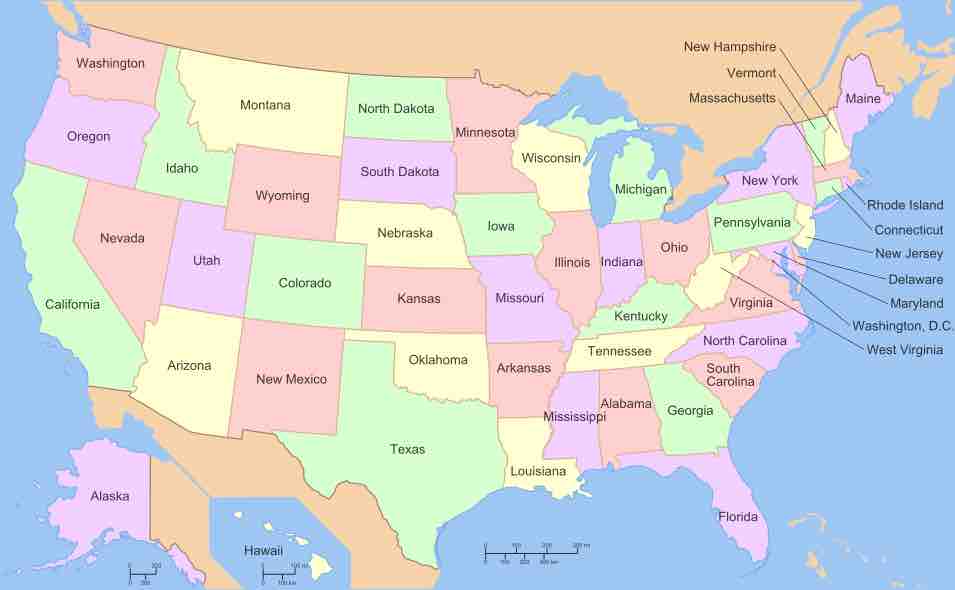Introduction
Federalism is a political concept in which a group of members are bound together by covenant with a governing representative head. The term "federalism" is also used to describe a system of government in which sovereignty is constitutionally divided between a central governing authority and constituent political units. Federalism is a system based upon democratic rules and institutions in which the power to govern is shared between national and state governments, creating what is often called a federation. Proponents are often called federalists.

Federalism around the World
A map showing countries currently organized along federalist principles in green.
History of Federalism in the United States
Federalism in the United States is the evolving relationship between U.S. state governments and the federal government of the United States. Since the founding of the country, and particularly with the end of the American Civil War, power shifted away from the states and toward the national government.

Federalism in the United States
The United States is composed of fifty self-governing states and several territories.
Originally, federalism was the most influential political movement arising out of discontent with the Articles of Confederation, which focused on limiting the authority of the federal government. In 1787, fifty-five delegates met at a Constitutional convention in Philadelphia and generated ideas for a bicameral legislature, balanced representation of small and large states, and checks and balances. Once the convention concluded and released the Constitution for public consumption, the Federalist movement became focused on getting the Constitution ratified.
The most forceful defense of the new Constitution was The Federalist Papers, a compilation of eighty-five anonymous essays published in New York City to convince the people of the state to vote for ratification. These articles, written by Alexander Hamilton and James Madison, with some contributed by John Jay, examined the benefits of the new, proposed Constitution, and analyzed the political theory and function behind the various articles of the Constitution. The Federalist Papers remains one of the most important documents in American political science.
The Federalist Papers
Title page of the first printing of the Federalist Papers.
In 1789, Congress submitted twelve articles of amendment to the states. Ten of these articles, written by Madison, achieved passage on December 15, 1791 and became the Bill of Rights. The Tenth Amendment set the guidelines for federalism in the United States. The Tenth Amendment states the Constitution's principle of federalism by providing that powers not granted to the federal government nor prohibited to the States by the Constitution are reserved to the States or the people.
Dual Federalism, Cooperative Federalism and New Federalism
Dual federalism is a theory of federal constitutional law in the United States according to which governmental power is divided into two separate spheres. One sphere of power belongs to the federal government of the United States while the other severally belongs to each constituent state. Each sphere is mutually equal, exclusive, and limiting upon the other sphere, and each entity is supreme within its own sphere. The theory originated within the Jacksonian democracy movement as backlash against the mercantilist American System and supported centralization of government under the Adams administration during the 1820s. With an emphasis on local autonomy and individual liberty, the theory served to unite the principles held by multiple sectional interests: the republican principles of northerners, the pro-slavery ideology of southern planters, and the laissez-faire entrepreneurialism of western interests.
The Great Depression marked an abrupt end to Dual Federalism and a dramatic shift to a strong national government. President Franklin D. Roosevelt's New Deal policies reached into the lives of U.S. citizens like no other federal measure had. The national government was forced to cooperate with all levels of government to implement the New Deal policies; local government earned an equal standing with the other layers, as the federal government relied on political machines at a city level to bypass state legislatures. This became known as Cooperative Federalism.
Another movement calling itself "New Federalism" appeared in the late 20th century and early 21st century. New Federalism, which is characterized by a gradual return of power to the states, was initiated by President Ronald Reagan (1981–1989) with his "devolution revolution" in the early 1980s and lasted until 2001. . Previously, the federal government had granted money to the states categorically, limiting the states to use this funding for specific programs. Reagan's administration, however, introduced a practice of giving block grants, freeing state governments to spend the money at their own discretion. New Federalism is sometimes called "states' rights", although its proponents usually eschew the latter term because of its associations with Jim Crow and segregation.